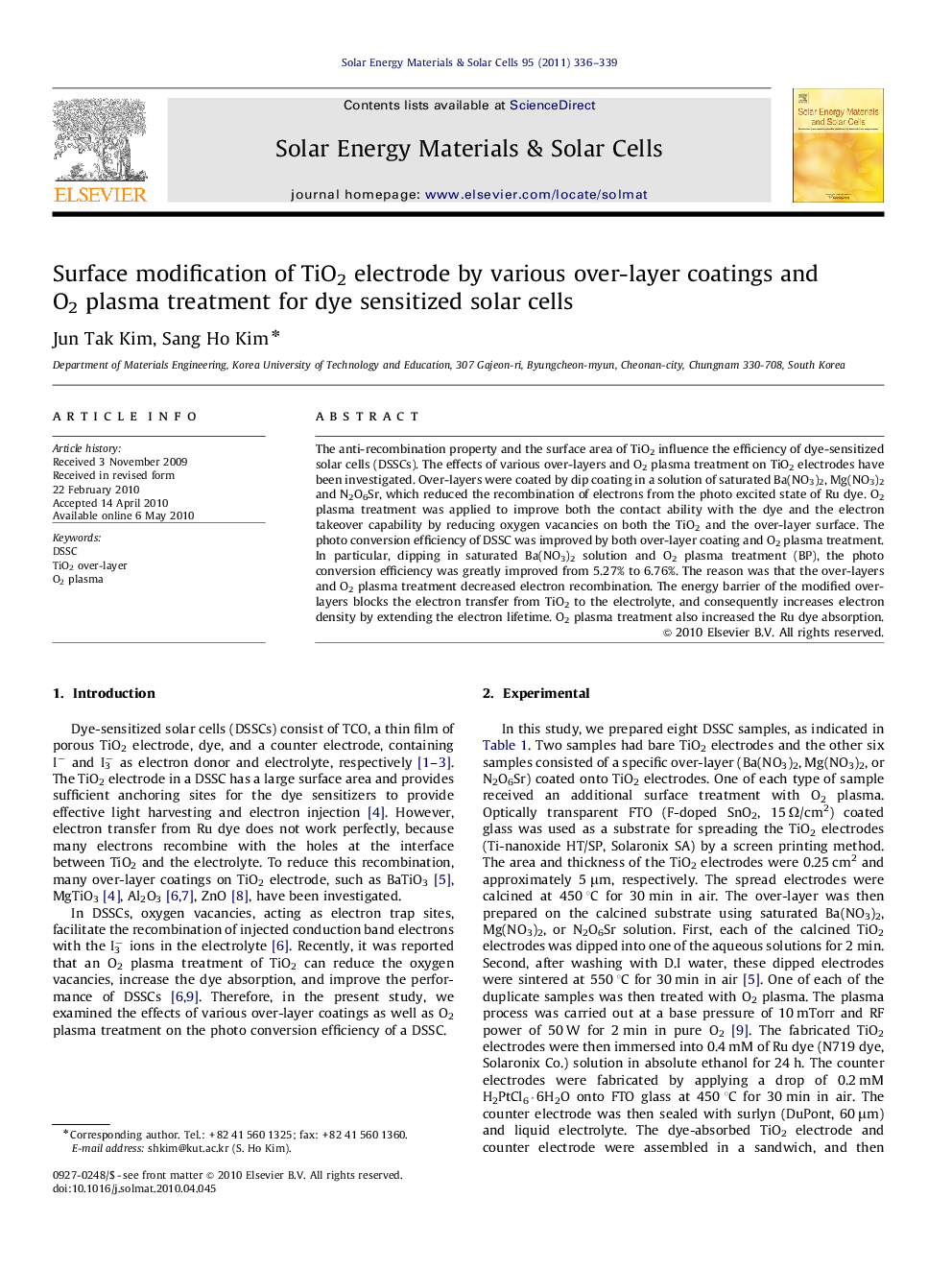| Article ID | Journal | Published Year | Pages | File Type |
|---|---|---|---|---|
| 79182 | Solar Energy Materials and Solar Cells | 2011 | 4 Pages |
The anti-recombination property and the surface area of TiO2 influence the efficiency of dye-sensitized solar cells (DSSCs). The effects of various over-layers and O2 plasma treatment on TiO2 electrodes have been investigated. Over-layers were coated by dip coating in a solution of saturated Ba(NO3)2, Mg(NO3)2 and N2O6Sr, which reduced the recombination of electrons from the photo excited state of Ru dye. O2 plasma treatment was applied to improve both the contact ability with the dye and the electron takeover capability by reducing oxygen vacancies on both the TiO2 and the over-layer surface. The photo conversion efficiency of DSSC was improved by both over-layer coating and O2 plasma treatment. In particular, dipping in saturated Ba(NO3)2 solution and O2 plasma treatment (BP), the photo conversion efficiency was greatly improved from 5.27% to 6.76%. The reason was that the over-layers and O2 plasma treatment decreased electron recombination. The energy barrier of the modified over-layers blocks the electron transfer from TiO2 to the electrolyte, and consequently increases electron density by extending the electron lifetime. O2 plasma treatment also increased the Ru dye absorption.
